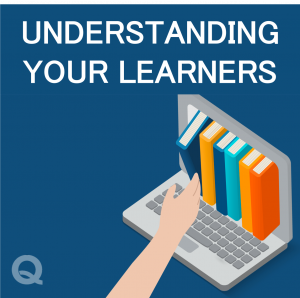Usability testing is the best way to gain a better understanding of how your learners (also known  as “users”) interact with your virtual sales training course materials. During, testing users are asked to complete simple tasks while being observed and often recorded. User testing can be done in-person or remotely, and when well designed, it will provide you with some great benefits.
as “users”) interact with your virtual sales training course materials. During, testing users are asked to complete simple tasks while being observed and often recorded. User testing can be done in-person or remotely, and when well designed, it will provide you with some great benefits.
When you make usability testing part of your e-learning or virtual sales training development process, you will be able to:
Save money.
Development costs can add up quickly and when you can see how your users are interacting with your content, you can ward off potential mistakes. For example, you can remove items that they do not care about, and you can fix areas that confuse them, such as navigation issues and other functionality issues that may frustrate them. Understanding what the user experiences allows you to focus on development time and money on what is most important to them, and will improve your learner motivation and program efficiency.
See where your learners get stuck in the Virtual Sales Training
When a button, link, or any other interaction item fails to work properly, it can frustrate the user. Vague instructions can also create problems. You may think you have accounted for all the possible issues, and you may think you know exactly how the user will interact with your content, but chances are you have made some mistakes and the user will find them. Usability testing will help highlight what you have missed and allow you to fix issues before they become a major problem, and impact learning outcomes.
Get an unbiased perspective.
It’s hard to take a step back and view things with fresh eyes, especially after we have spent so much time working on a building out content and assessments. Even our own teams will harbor certain biases when reviewing, performing quality control checks and testing course modules. But we have to keep in mind who we are creating for, and we have to be able to view things through the user’s eyes in order to create anything of value. Usability testing allows you to see what the user sees and experiences, so you can make your e-learning course better.
Improve user experience and increase learning outcomes.
The goal is to engage the user, provide them with the material they need to learn, and ensure they complete the lesson. You may have great intentions but if you are not providing value and making it easy for the user to access and interact with the content, then all your hard work is for nothing. Usability testing can help you see barriers to success such as poor navigation, improper branching, interaction issues, unclear content, etc. so you can fix them and make the user experience as easy as possible for them. It is also important to make sure you are testing on multiple devices, and that you get a proper user sample to ensure you are not missing anything.
Lower support costs.
When you provide the user with the ability to self-solve problems during the lesson, you can lower your support costs and decrease learner frustration. Review your most frequently asked questions and most frequently encountered support requests. Fix them immediately so they are no longer support issues, and make sure you have resources or a knowledge base that the user can access anytime throughout the module to help get quick answers to potential questions. Make sure the information is always up to date and easy to find.
Keep in mind, building a virtual sales training course right the first time, can save you significant time and money in the long run. Not to mention help ensure better learner engagement, motivation, and outcomes. Usability testing does not have to be complicated, and it should be a standard part of your e-learning development process. Remember to test often, and make sure you are delivering the best user experience possible.
******
Tina Indalecio is the Director of Learning & Development at Tech Qualled and has over 25 years of combined education, design, business operations, sales, and marketing experience. She has developed and delivered educational courses for K-12, higher education and adult learners. In addition, she has been an Adjunct Faculty member at The Fashion Institute of Design and Merchandising (FIDM) and a guest lecturer/speaker at The Art Institute and UCSD Extension. She has taught marketing, communications, business, and creative design courses, as well as assisted students with portfolio development and reviews.
